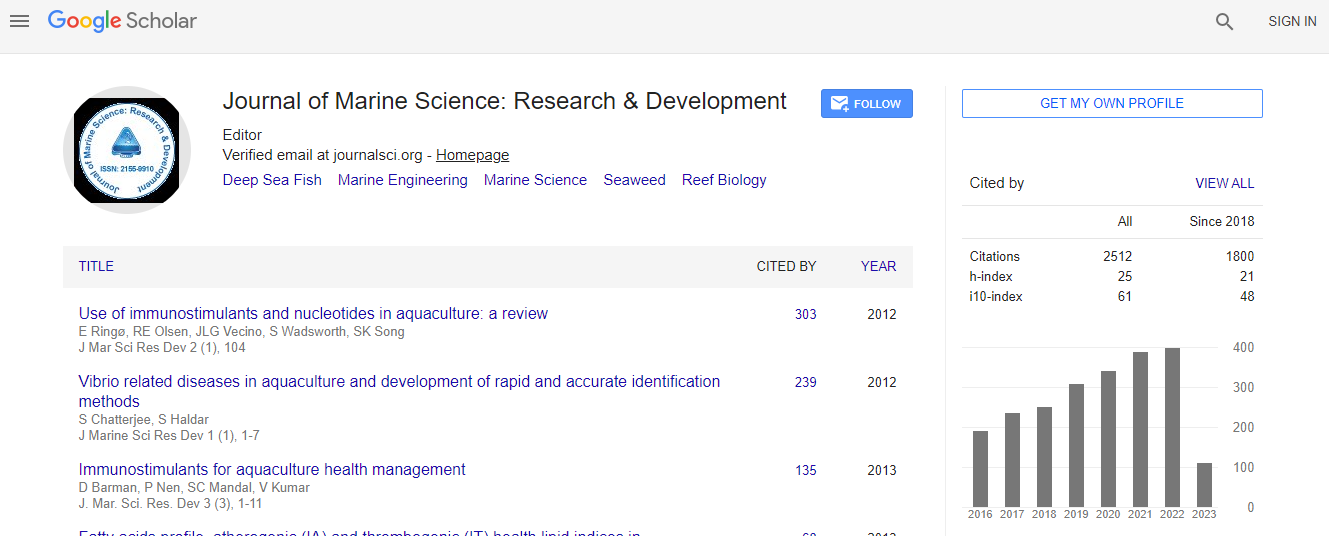Special Issue Article
Decadal Change in the Surface Water Salinity Profile of Indian Sundarbans: A Potential Indicator of Climate Change
Kakoli Banerjee*School of Biodiversity & Conservation of Natural Resources, Central University of Orissa, Landiguda, Koraput 764020, Odisha, India
- *Corresponding Author:
- Kakoli Banerjee
School of Biodiversity & Conservation of Natural Resources
Central University of Orissa
Landiguda, Koraput 764020
Odisha, India
Tel: 09439185655
E-mail: banerjee.kakoli@yahoo.com
Received date August 02, 2013; Accepted date October 30, 2013; Published date November 08, 2013
Citation: Banerjee K (2013) Decadal Change in the Surface Water Salinity Profile of Indian Sundarbans: A Potential Indicator of Climate Change.J Marine Sci Res Development S11:002. doi: 10.4172/2155-9910.S11-002
Copyright: © 2012 Banerjee K. This is an open-access article distributed under the terms of the Creative Commons Attribution License, which permits unrestricted use, distribution, and reproduction in any medium, provided the original author and source are credited.
Abstract
We present evidence that the Indian Sundarbans, a subsiding delta formed by the two major River systems of the Ganges and the Matla is experiencing the effects of climate change. Global warming, deglaciation of the Gangotri Glacier in the Himalayan ranges, Farakka barrage discharges and sea level rise have accelerated such changes over the last two decades. Observations of salinity over a period of 23 years (1990-2012) showed a significant long-term variation. Due to different geographical settings in the western, central and eastern sectors of the deltaic Sundarbans, the footprints of these changes were manifested in different patterns and on different scales.
As human populations have expanded, the shortage of productive land in many developing countries has led to the clearance of large areas of mangrove for agriculture and aquaculture production. Demands for timber (for charcoal, building etc) and coastal development space have also been highly damaging. Mangrove forests in some areas have been reduced to mere relicts of their former ranges as a result of human exploitation. The common perception of increased salinity is due to increased evaporation resulting in an increase in salinity, and also by sea level rise which is projected between 0.9 and 8.8 mm/year. This study shows that, during this period, increasing melting of Himalayan ice might have decreased the salinity at the mouth of the Ganges River, where it meets the oceanic waters at the western end of the deltaic complex of the Indian Sundarbans. At the same time, salinity has increased on the central sector, where the connections to the meltwater sources have become extinct due to heavy siltation of the Bidyadhari Channel. Again there is a decrease in the salinity levels on the eastern half as a result of the discharge of the River Padma and Brahmaputra. The water quality increased in the west and decreased in the central part. These observed changes could possibly be attributed to a combined effect of climate change consequences and human interventions and related phenomena, a subject, which is not part of this study. The ecological impact of such changes is an alarming signal for shoreline changes due to shifting of the mangroves inward.

 Spanish
Spanish  Chinese
Chinese  Russian
Russian  German
German  French
French  Japanese
Japanese  Portuguese
Portuguese  Hindi
Hindi 